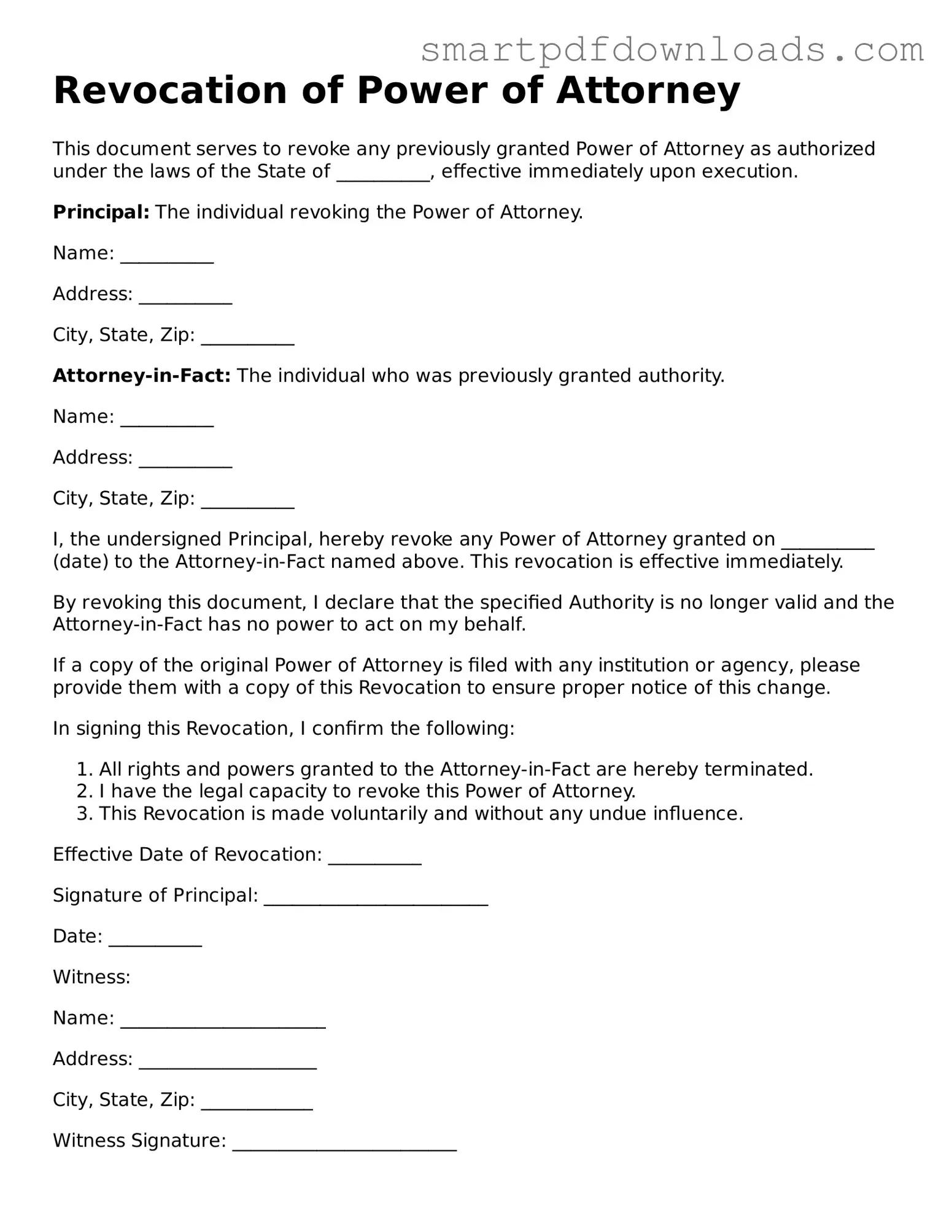Revocation of Power of Attorney
This document serves to revoke any previously granted Power of Attorney as authorized under the laws of the State of __________, effective immediately upon execution.
Principal: The individual revoking the Power of Attorney.
Name: __________
Address: __________
City, State, Zip: __________
Attorney-in-Fact: The individual who was previously granted authority.
Name: __________
Address: __________
City, State, Zip: __________
I, the undersigned Principal, hereby revoke any Power of Attorney granted on __________ (date) to the Attorney-in-Fact named above. This revocation is effective immediately.
By revoking this document, I declare that the specified Authority is no longer valid and the Attorney-in-Fact has no power to act on my behalf.
If a copy of the original Power of Attorney is filed with any institution or agency, please provide them with a copy of this Revocation to ensure proper notice of this change.
In signing this Revocation, I confirm the following:
- All rights and powers granted to the Attorney-in-Fact are hereby terminated.
- I have the legal capacity to revoke this Power of Attorney.
- This Revocation is made voluntarily and without any undue influence.
Effective Date of Revocation: __________
Signature of Principal: ________________________
Date: __________
Witness:
Name: ______________________
Address: ___________________
City, State, Zip: ____________
Witness Signature: ________________________
Date: __________
